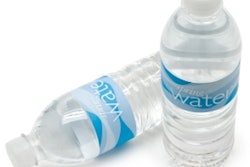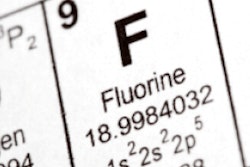
Dental professionals and public health advocacy groups are applauding the U.S. Department of Health and Human Services' (HHS) new recommendation for a single level of fluoride in community water systems. But critics remain opposed, asserting that the chemical used for fluoridation contains toxins.
HHS recommended a single level of fluoride of 0.7 mg/L (parts per million [ppm]) to maintain caries prevention benefits and reduce the risk of dental fluorosis in community water systems, according to an April 27 announcement. The previous recommendation was a range of 0.7 mg/L to 1.2 mg/L, which was issued in 1962.
 ADA President Maxine Feinberg, DDS
ADA President Maxine Feinberg, DDS"Water fluoridation is effective and safe," said ADA President Maxine Feinberg, DDS, in an ADA statement.
She noted that it has been 70 years since Grand Rapids, MI, became the first U.S. city to add fluoride to its water system.
"Since then, decades of studies and the experience of tens of millions of people have affirmed that water fluoridation helps prevent cavities in both children and adults," stated Dr. Feinberg, adding that the HHS announcement "is based on solid science."
The earlier fluoridation range reflected higher levels that were advised for northern areas because research shows that people in cooler northern climates drank slightly less water than those in warmer southern regions, according the U.S. Centers for Disease Control and Prevention. But according to the latest data, as more people live and work in climate-controlled environments, regional differences in water consumption have become negligible. New research also took other factors into account, including increased levels of fluoride in beverages, toothpaste, and other oral health products.
Fluoride opponents maintain position
But fluoride opponents remain unconvinced. "We believe that fluoride should not be added to water at any level," Carol Kopf, media director of the Fluoride Action Network, told DrBicuspid.com.
She asserted that the chemical used to fluoridate most water systems, hydrofluosilicic acid, is unsafe to consume. "It's a waste product of the phosphate fertilizer industry, and it is allowed to have trace amounts of lead, arsenic, and other toxins," she said. "Fluoride is not a nutrient and is not essential to healthy teeth. There's no dispute between those for and against fluoride that too much is a bad thing."
The new recommendation was prompted by growing rates of fluorosis, which could cause teeth to become brown and pitted in the most severe forms, Kopf said.
However, the ADA said the recommendation will help ensure effective levels of fluoride to reduce dental caries while minimizing the risk of cosmetic fluorosis in the general population.
Variety of fluoride sources
The American Academy of Pediatric Dentistry (AAPD) noted that children now receive fluoride from a variety of sources that were not available when the original levels were proposed.
“Water fluoridation is effective and safe.”
"The change in level recommended today allows for these other sources of fluoride intake and will still maintain the protective benefit of fluoride as well as reduce the likelihood of fluorosis," AAPD President Edward H. Moody Jr., DDS, told DrBicuspid.com.
The American Dental Hygienists' Association (ADHA) noted that fluoridated public water systems have significantly improved residents' oral health. Nearly 75% of Americans who use public water systems receive fluoridated water.
Hygienists play a pivotal role in helping patients understand fluoride's advantages, the ADHA pointed out.
"As dental hygienists, it's important that we educate the public on the preventive benefits of community water fluoridation," ADHA President Kelli Swanson Jaecks, MA, RDH, told DrBicuspid.com. "It is vital that we continue to utilize water fluoridation to help the public achieve their optimal oral health."
Studies show that fluoridation reduces dental caries by about 25% for people of all ages, according to the Pew Charitable Trusts.
"Water fluoridation and fluoride toothpaste are largely responsible for the significant decline in tooth decay in the U.S. over the past few decades," noted Jane Koppelman, research director of Pew's children's dental policy, in a statement to DrBicuspid.com. "Optimally fluoridated water is the single most cost-effective strategy that a community can use to improve the oral health of its residents."
ADA supports expanded community fluoridation
ADA Executive Director Kathleen O'Loughlin, DMD, urged extending fluoridation to communities that do not now have it in the ADA statement.
Extending the availability of optimally fluoridated water is one of the ADA's Action for Dental Health initiatives. The ADA and state dental societies have set a goal of bringing fluoridated water to 80% of the population served by public water systems by 2020, using baseline levels of 74% in 2010.
Residents in nonfluoridated communities should talk to their dentists about other ways to ensure that they are receiving the right amount of fluoride, through supplements or topical applications, the ADA said.



















